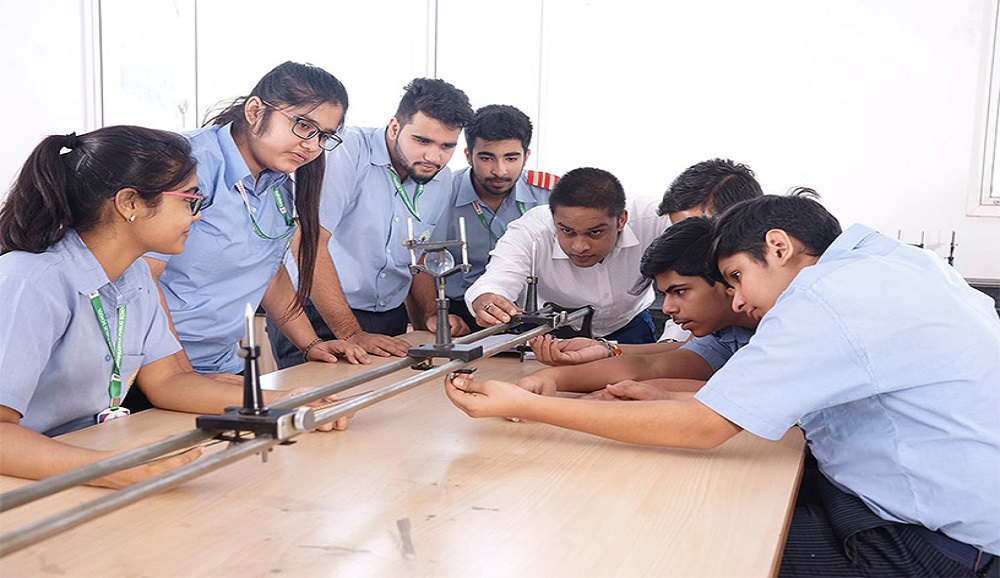There is no dispute about the fact that technology has become an essential part of education. But along with using the same as an essential tool to impart education, schools in Sonipat now also have the responsibility to teach technology in the classrooms, get young students motivated to learn upcoming technologies, and provide exposure so that the fast-changing digital world does not seem alien to the children in their future. The world is currently abuzz with technologies like data science, artificial intelligence, 3D printing, and robotics. The big question is – how do schools get students motivated enough to start exploring these topics?
Gamification is the best way
Think about applications that allow children to code in real-time to complete a game. With gamification, teaching technology brings in a fun element with other ingredients like competitiveness and instant gratification. Today, numerous applications are available for children of all ages to learn the basics of coding and design low-level computer intelligence by simply dragging and dropping algorithms. These pave the way for learning more complicated topics like AI and robotics and the whole process happens by simply playing games. A smartboard is enough to integrate such technologies into the classrooms. Schools can also choose to take the lessons to IT labs with individual students learning at their own pace.
Practical exposure goes a long way
The best school in Sonipat now has a robotics lab to teach the subject. All discussions about data science happen in the IT lab where students can immediately access computers and start writing algorithms. In the 21st-century, most students already bring a fascination with the latest technologies to schools. If the lessons happen majorly over theory, things can turn monotonous very soon. However, if students can code in real-time and move a robotic arm in a certain way, their interest is bound to peak and they will explore more. When students see their imaginations becoming reality right in front of their eyes, they will pursue the topic with intrinsic motivation. Practical exposure, thus, is a must. Schools without the required infrastructure cannot teach technology efficiently and can neither spark any interest.
Project-based learning helps
Setting projects help students to learn about the latest technologies in productive ways. For instance, using 3D printing technology, students can build working models of their big ideas as part of completing a science project. Data science can also come in to validate a finding wherein students can extrapolate real-world data to prove a certain point. Projects give the subject meaning. They also bring students together to learn something collaboratively. The horizons can branch out to use Cloud technology to work together on a single sheet or use video conferencing features to collaborate. One project can teach students multiple technologies. It can entail almost any topic, any idea, any skill, and more importantly, any technology.
Promoting entrepreneurship is also key
The top 5 schools in Sonipat are integrating entrepreneurial mindset among their students and this is an effective way to help students learn about new technologies. Entrepreneurship encapsulates innovation. And innovation can only happen by exploring new ideas. With the right kind of support, students can receive the motivation to pursue an idea and explore related topics on their own. For instance, a student working to simplify disease diagnosis will have to venture out into AI. Someone interested in self-driven cars will have to research more into robotics. If such ideas get a boost from Angels and VCs which show students that their work has potential, they will automatically drive themselves to learn about technology.
The methods have to be innovative
“Just because it is mentioned in the syllabus” is an obsolete concept. No modern school can force students into computer labs and teach them effective programming. Institutions need to come up with innovative methods to teach technology. They need to invest in the right infrastructure and form the required partnerships.
Swarnprastha Public School has been doing something similar for quite some time now. Its DICE approach is directed to inspire students to think on entrepreneurial lines and pick up new projects to work on regularly. This is supported by its ATAL Tinkering Lab and Microsoft Imaging Academy. Students get access to programmable robots, 3D printers, IoT infrastructure, Cloud and Data Science lessons, AI and ML theories, and so on. On top of these, SPS classrooms are equipped with digital tools to integrate technology into education. The combined effect is a perfect blend that teaches new and upcoming technologies to students in the right way where students research and exploration of their own will rather than the teachers directing them to do so. Learning technology cannot be monotonous. In the digital world, there is no place for technical illiteracy.








